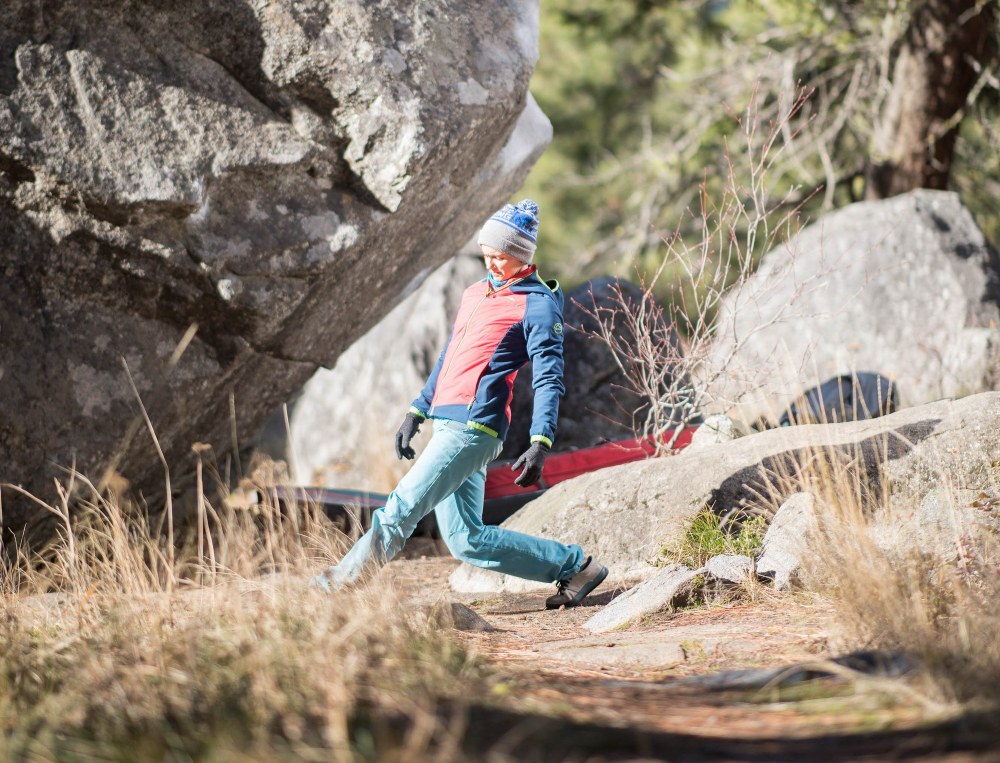
Living a modern lifestyle means keeping up with a lot, especially if you want to fit everything in. When it comes to trips outdoors, how do you balance training hard to perform while feeling rested enough so you can be your best? How do you avoid the risk of burnout, injury, and exhaustion? The answer is recovery.
Before I was a climber, I was a semi-pro tennis player. I played in college, training 20-25 hours a week. I got limited sleep, was sick a lot, and expected to perform at my highest level.
When I turned to climbing, my habits didn’t change. I thought busting my butt as often as possible was the way to win. Nope. It was a way to get injured, a lot. It wasn't until my early thirties that I started to understand recovery.
What is recovery?
Recovery is when your body adapts and repairs. Put more scientifically, it’s when your heart rate and blood pressure decrease and your parasympathetic nervous system activity increases. A recovery state allows the body to start rebuilding by allocating energy to the recovery process.
Here’s an important insight about your amazing body: your energy is LIMITED. And guess what. Stress uses up a lot of energy. Training is stress. Eating food that your body can’t tolerate is stress. Having unrealistic deadlines is stress. Any stress is stress - your body can’t tell the difference.
Consistently training at higher intensities, which means having high levels of stress, makes it difficult for your body to allocate energy for recovery. However, when you progressively stress the body, varying the intensity, volume, and time of your training, your body can adapt long-term.
How to optimize recovery
Train thoughtfully. Vary the intensity of your training. Include mostly low intensity as often as you can, with days of moderate intensity. High intensity can be done a few times a month. Make sure to have a warm-up and cool-down. Incorporate breathing exercises before and after sessions, which spikes parasympathetic activity. Note: moderate to high intensity for long periods of time will be very difficult to recover from, making the next few days, weeks, and months suboptimal.
Eat. Fuel up with enough calories and prioritize protein. If you want to thrive, eat your body weight in protein, and don’t be afraid of carbs.
Sleep. Strive for around eight hours of high-quality sleep a night. Things that affect the quality of sleep are alcohol, drugs, caffeine, and stress. Create boundaries with family and friends, and set priorities for yourself. Sleep more, it’s worth it.
Move. Build your aerobic engine with low intensity movement every day, such as walking and getting your 7,000 steps. Even 15-20-minute cardio sessions at a low intensity can boost your recovery. On rest days, focus on low intensity movements that drive blood flow. Do you feel better and springy after your workout? Then it's likely a recovery workout!
Here are ideas to introduce into your recovery workouts:
- Lifting and movement, but nothing that makes you sore
- Foam rolling tight muscles, 30-60 seconds per area
- Stretching
- Stimulation (such as cold water therapy)
- Relaxing the brain (meditation, hot therapy, swimming/floating)
There's so much you can do to optimize your recovery. The key is to start with one. Choose methods that will be easy to stay consistent with, add more strategies slowly to build the habit, and remember to move every day. By prioritizing your recovery, you’ll be able to thrive this winter season!
Mercedes Pollmeier is an NSCA-certified strength and conditioning specialist based in Seattle, with degrees in exercise science and human movement, and is a Precision Nutrition L2 Master Coach. Currently, she owns her own climbing coaching company, Modus Athletica, training climbers in person and online. Visit her online at modusathletica.com and on Instagram @modusathletica.
This article originally appeared in our winter 2024 issue of Mountaineer magazine. To view the original article in magazine form and read more stories from our publication, visit our magazine archive.
 Mercedes Pollmeier
Mercedes Pollmeier